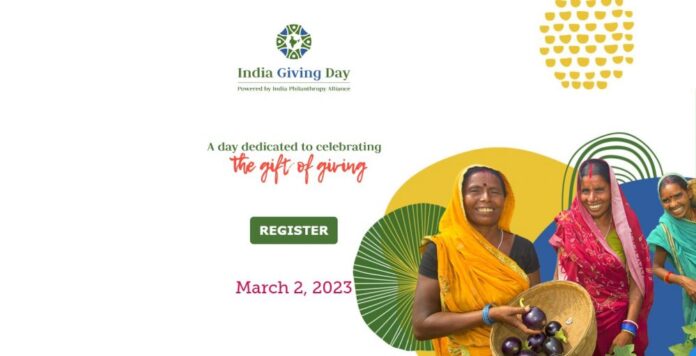The plan is to encourage US-based donors, especially the nation’s 2.7 million Indian immigrants and the roughly 1.3 million US-born Americans of Indian origin, to give to Indian causes in unison
Pravasi
Members of the Indian diaspora living in the US are being asked to give money back to the homeland during a 24-hour charitable drive. On March 2, 2023, the first India Giving Day will take place. The plan is to encourage US-based donors, especially the nation’s 2.7 million Indian immigrants and the roughly 1.3 million US-born Americans of Indian origin, to give to Indian causes in unison.
The campaign’s organizers will raise money to fund projects that will improve education, health care and gender equality and meet other important needs in a country with 228.9 million people living in poverty, according to the 2022 Global Multidimensional Poverty Index – more than anywhere else in the world.
The India Philanthropy Alliance, a coalition of 14 US nonprofits that fund development and humanitarian projects in India, is coordinating the event. Its members already raise a total of almost US$60 million annually in the US. Their goal is to amass more funding collectively by holding an annual single-day push.
Although the alliance will welcome donations from anywhere and anyone, its main focus is to encourage Indian Americans and Indian immigrants who live in the US to support its members, such as CRY America, a children’s rights nonprofit, and Sehgal Foundation, an organization promoting rural development in India.
Giving days, 24-hour campaigns to raise awareness and donations for specific organizations and causes, have become common in the US over the past 15 years. There are many for schools, hospitals and many other kinds of organizations but Giving Tuesday is the most popular. Held on the first Tuesday after Thanksgiving, it raised over $3 billion for a wide array of causes in 2022.
There is the potential for even higher sums being raised from the many very rich Indian Americans – a long list that includes actress Mindy Kaling, Alphabet CEO Sundar Pichai, economist Amartya Sen, Microsoft CEO and Chairman Satya Nadella – and the entire Indian American community.
-
There is currently no way to estimate diaspora philanthropy’s scale. One reason for that is that funding is channeled through countless intermediaries, from diaspora-led organizations and hometown associations to universities
-
While India is one of the world’s fastest-growing economies, it also has daunting needs when it comes to addressing poverty in its lowest-income regions
That’s because Indian Americans are the nation’s highest-earning ethnic group, and yet they give away a smaller share of their income than the US average.
The alliance aims to see Indian American giving triple to $3 billion, with some of that total funding development and humanitarian projects in India. India’s government has also been vocal about wanting Indian Americans to contribute more toward India’s development.
India Giving Day is an example of diaspora philanthropy – giving back to one’s homeland, often by pooling resources with others who share the same heritage. This giving can be in the form of money, or time spent volunteering for a cause. It has also been called homeland philanthropy, migrant philanthropy and refugee philanthropy.
While India is one of the world’s fastest-growing economies, it also has daunting needs when it comes to addressing poverty in its lowest-income regions
A common way that immigrants and people whose parents or grandparents immigrated to the US send money back to their homelands is through remittances – dispatching money across international lines to family and friends to help them get by. Total remittances globally grew 5% in 2022 to $626 billion. The flows to India increased much more sharply, shooting up 12% to $100 billion.
Diaspora philanthropy can be characterized as collective remittances for development and humanitarian projects. Diaspora communities are motivated to collectively give because of their shared identity and sense of responsibility to their countries of origin.
There is currently no way to estimate diaspora philanthropy’s scale. One reason for that is that funding is channeled through countless intermediaries, from diaspora-led organizations and hometown associations to universities.
While India is one of the world’s fastest-growing economies, it also has daunting needs when it comes to addressing poverty in its lowest-income regions.
*********************************************************************
Readers
These are extraordinary times. All of us have to rely on high-impact, trustworthy journalism. And this is especially true of the Indian Diaspora. Members of the Indian community overseas cannot be fed with inaccurate news.
Pravasi Samwad is a venture that has no shareholders. It is the result of an impassioned initiative of a handful of Indian journalists spread around the world. We have taken the small step forward with the pledge to provide news with accuracy, free from political and commercial influence. Our aim is to keep you, our readers, informed about developments at ‘home’ and across the world that affect you.
Please help us to keep our journalism independent and free.
In these difficult times, to run a news website requires finances. While every contribution, big or small, will makes a difference, we request our readers to put us in touch with advertisers worldwide. It will be a great help.
For more information: pravasisamwad00@gmail.com



